Getting Over Gout: 11 Herbal and Natural Remedies
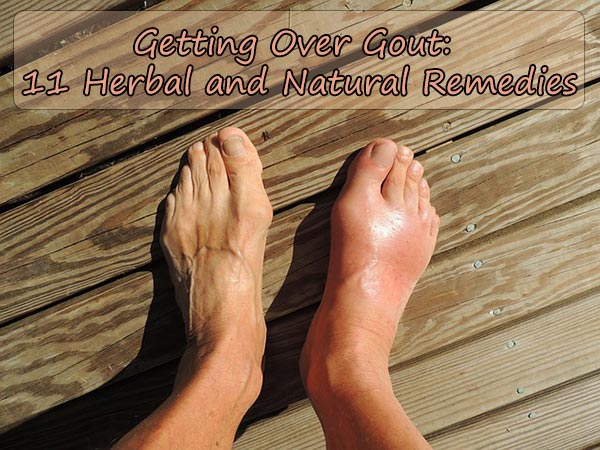
There is nothing good about gout. Essentially a short-term form of arthritis, gout is caused by elevated levels of uric acid in the blood stream. If not properly eliminated, this acid can form needle-like urate crystals that collect in joints and soft tissues in the body. Gout symptoms typically start as severely painful swelling and redness, usually in the joint of a big toe.
Left untreated, however, gout can spread to other joints in the foot, ankle, knees, wrists, and hands. In extreme cases, this painful condition can also lead to kidney stones and damage. Even in its early stages, however, gouty arthritis can be debilitating. Attacks of pain from gout tend to happen in the middle of the night, disturbing sleep, and leading to a host of other issues during waking hours.
While there is no immediate cure for gout, there are a number of natural and herbal dietary and topical remedies that can help you relieve the pain and inflammation caused by the disease. As with any treatment, it is recommended you consult a doctor before trying the following remedies, but some of these simple solutions can offer a huge helping of healing!
1. Apples

Everyone knows the old adage “An apple a day keeps the doctor away”, and in the case of gout, this saying may be much more fact than fiction. Malic acid present in apples can be a big help in neutralizing uric acid in the body, thereby relieving the pain and inflammation of gout.
Experts suggest simply eating an apple as dessert after every meal to help control uric acid. If you do not like to eat apples, apple juice can also be consumed as an alternative. Raw carrots are also recommended to boost the effects of this treatment.
2. Apple Cider Vinegar
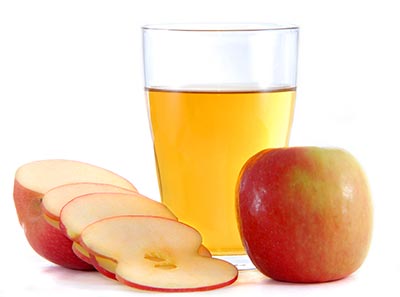
Another good way to utilize the effects of apples and malic acid is with apple cider vinegar (ACV). The malic acid content will help break down deposits of urate crystals allowing your body a chance to eliminate them more easily. The vinegar also helps to further neutralize uric acid, creating an alkaline state in the body.
To treat gout with ACV simply mix a teaspoon of raw, unfiltered, organic ACV in a glass of water and drink 2-3 times per day. To sweeten the mixture and boost the body’s anti-inflammatory response to this treatment, you can also add a little bit of honey. If the treatment is effective for you, you can increase the concentration up to 2 tablespoons of ACV without risk of harm.
If you are looking for other health benefits of apple cider vinegar then check out his article. 8 Health Benefits of Apple Cider Vinegar
3. Cherries
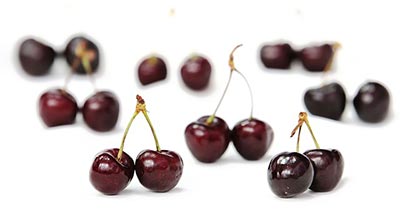
Another simple, tasty, and vitamin C rich treatment for gout is eating cherries. With their powerful antioxidant properties and their content of the flavonoid anthocyanin, cherries can help reduce inflammation and minimize the potential of gout flare-ups.
For gout patients, the recommended treatment is simply eating 15-20 cherries a day, particularly effective if at least some are consumed in the morning. As an alternative, you can also drink a glass of black cherry juice daily if whole cherries are out of season or unavailable.
4. Bananas

The high potassium content in bananas is also highly recommended as a gout treatment, as it will help break down urate crystals into liquid form, making them easier to eliminate through normal urination. While the vitamin C content of bananas is lower than other fruits, it can also still provide a degree of assistance in controlling swelling and pain.
To help with gout, simply eat one or two bananas daily. Maximize the effects by combining bananas with the other fruits mentioned in this article. Fruit salad, anyone?
5. Lemon Juice
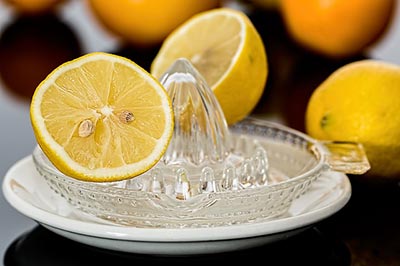
Rich in vitamin C, lemon juice can be a part of a simple drink that will help neutralize uric acid in the blood stream as well as helping to reduce painful swelling. Simply mix the juice of a lemon with a half teaspoon of baking soda. When the soda stops fizzing in the juice, add the mixture to a glass of water and drink immediately.
6. Ginger Root
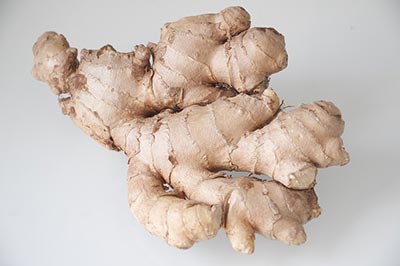
A common flavoring ingredient in Asian dishes, ginger root has a number of healing properties that can go a long way in knocking out gout! While medicinal uses for ginger have typically surrounded gastrointestinal issues, recent clinical studies have shown that regular consumption of ginger is not only effective against gouty arthritis, but also rheumatoid and osteoarthritis. The strong anti-inflammatory compounds in ginger root called gingerols and shogaols can help in a number of ways, both internally and externally. The simplest way to utilize ginger root, of course, is either to incorporate it into cooking or simply eat a small piece of raw ginger root daily. There are a few healing drinks that can be made from ginger as well:
- Add a half-teaspoon of ginger root to a cup of boiling water and mix well. Drink the solution once daily.
- Mix equal amounts of dried ginger root powder, turmeric powder, and fenugreek powder in a bowl. Combine one teaspoon of the mixture with warm water in a cup and drink twice daily.
To utilize the healing power of ginger root directly at the source of pain, a simple paste can be made by combining ginger with a little water and applying it to painful joints. Or using a towel soaked in boiled ginger can be used as an anti-inflammatory compress at the site of swelling and pain from gout.
7. Turmeric Root
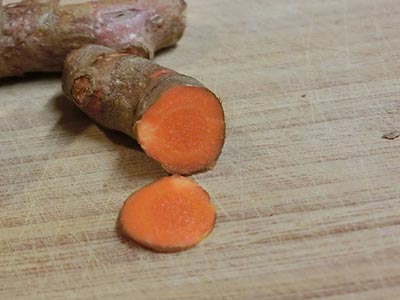
Another root that is a powerful anti-inflammatory qualities and is a popular treatment for gout and other forms of arthritis is turmeric. Also used to treat general stiffness and pain, turmeric is often said to be as powerful as hydrocortisone, but all natural and without the risk of side effects. Turmeric can be ingested in powder form, tea, or even commercial capsules and tablets. A 300-600 mg dose of standardized turmeric extract is taken 3 times a day to reduce gout pain and inflammation in most people. A simpler way to ingest it, however, is to simply incorporate turmeric in your cooking. A tasty herb, it is quite often found in Indian dishes. You can also simply add a teaspoon of turmeric powder to a glass of water and drink it that way.
8. Cayenne Pepper
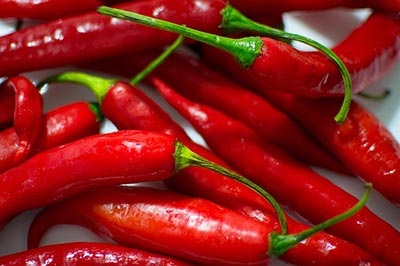
Another popular spice, cayenne pepper can also be an effective natural treatment for gout. The active ingredient in cayenne pepper is called capsaicin, which is known as a counter-irritant. When used topically, capsaicin irritates the skin disrupting the pain messengers that commonly affect people with gout. There are commercial capsaicin creams available to treat pain, but you’ll want to only use them as directed and wash your hands well after applying as it can cause severe pain if you get it in your eyes or mouth. Alternately, you can slice and apply a cayenne pepper directly to the affected area for a few minutes, but then remove and clean the area gently to prevent skin irritation. Cayenne pepper can also be easily incorporated into your diet to help lower uric acid levels and help regulate toxins in the blood. If you are going to eat cayenne it is recommended to combine it with a starchy food like potatoes to ease the effects on the digestive system. Or if you don’t like eating spicy foods, you can also find cayenne pepper in ingestible capsules or tablets and even some teas.
9. Epsom salt
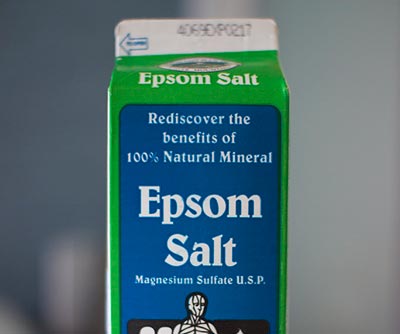
Another popular treatment for treatment of arthritis, gout, and a number of other painful conditions is Epsom salt. When used in a soak, Epsom salt is very helpful in relaxing sore muscles and relieving pain. To use in a whole-body bath to treat aches and pains, add two cups of Epsom salt to a warm bath once a week. For a small-scale soak, add a half-cup of Epsom salt to two gallons of warm water and soak the affected area for 15-20 minutes.
If you are looking for more uses for Epson salt in your garden, you may want to check out this article, called How to Use Epsom Salt in Your Garden
10. Activated Charcoal
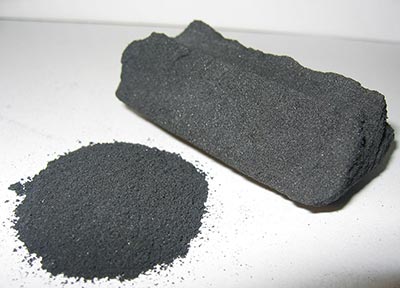
A natural neutralizer of uric acid, many gout sufferers find relief from using charcoal in a number of ways:As a foot and ankle soak, mix a half-cup of powdered charcoal with water to make a paste.
- Add the paste to a tub and mix in enough warm water to submerge the affected area. Soak for at least a half hour for best results.
- For hands, wrists, elbows, or other joints affected by gout, you can also make a charcoal paste and simply apply it to the skin for 30 minutes before rinsing with warm water. To keep the paste in place, I found covering it with a damp paper towel and then wrapping the area with plastic food wrap is an easy solution.
- There are also activated charcoal capsules available for ingestion to treat gout pain and inflammation, but as with any treatment, I would recommend consulting a doctor before trying this option.
11. Cold Water
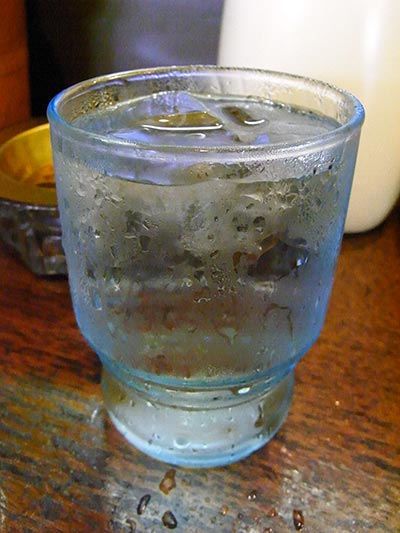
While ice is a natural go-to for pain, swelling, and inflammation, it is NOT recommended for the treatment of gout! Aside from potentially irritating the skin, ice and overuse of ice packs can actually promote the formation of urate crystals in the affected area. As an alternative, you can relieve the swelling and pain of gout by simply immersing the swollen joints in cold water for 10-15 minutes a few times a day. If you do use an ice pack or cold compress, make sure it is insulated with a towel or cloth to prevent overcooling of the area and making your symptoms worse.
 Home and Gardening Ideas At home and Gardening ideas we believe inspiring readers about homesteading, self sufficiency
Home and Gardening Ideas At home and Gardening ideas we believe inspiring readers about homesteading, self sufficiency





